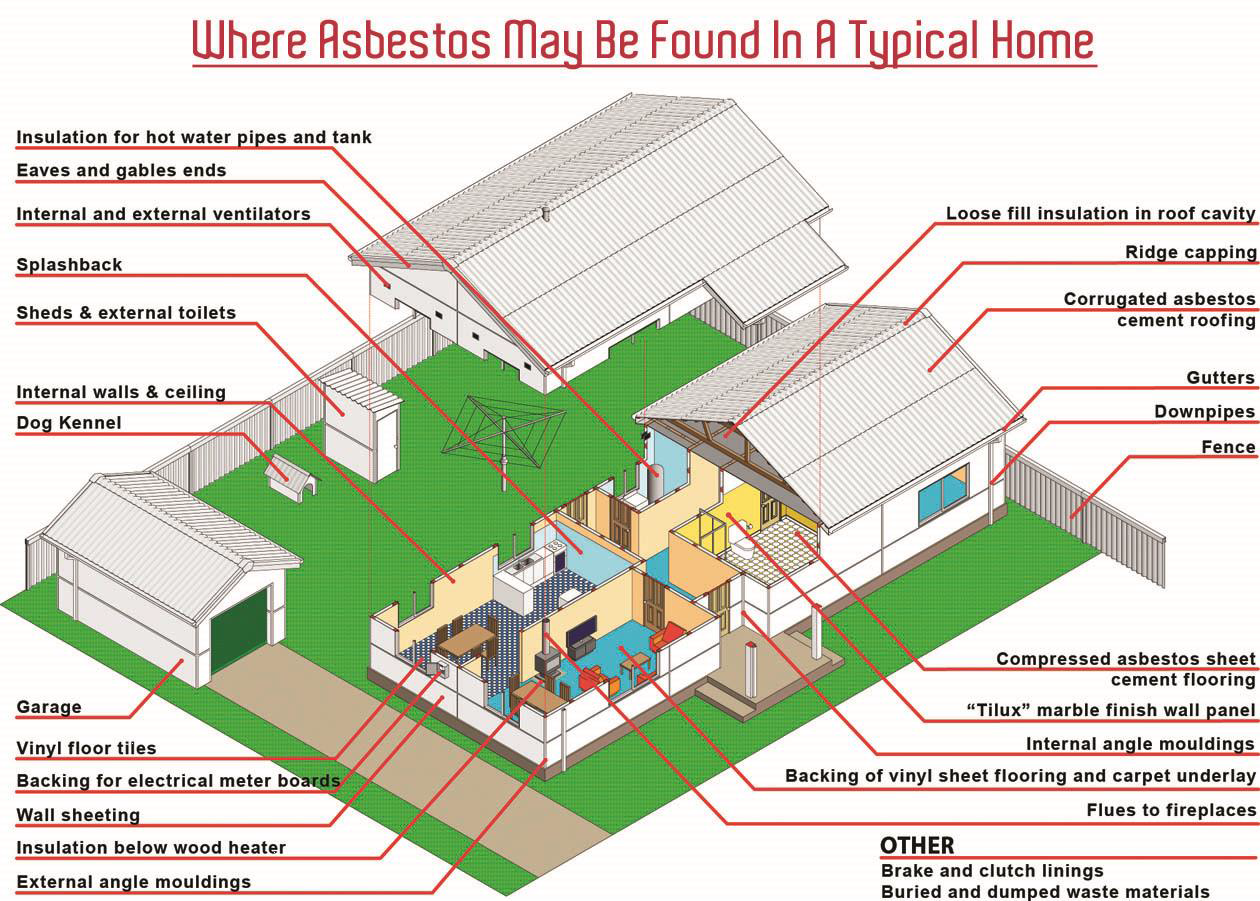Australia has the highest per-capita rate of asbestos-related diseases in the world, and rates of malignant mesothelioma (MM) continue to climb, particularly those associated with home renovation.
Aligning with , 1 - 30 November, the Cancer Council WA and the Department of Health are offering an for people to educate themselves and ensure they know what they are doing when embarking on any renovating job around the house, big or small.
What is asbestos?
is a naturally-occurring fibrous mineral which was originally considered a versatile product able to resist heat with excellent durability and insulating properties. Until the mid-1980s, asbestos materials were very common in the Australian building industry.
All forms of asbestos manufacturing, transport, storage and sale were banned in Australia on the 31st of December, 2003.
Understanding asbestos
Asbestos-containing materials can be classified as either bonded (tightly bound) or friable (loosely bound).
- Friable asbestos is any material containing asbestos and is in the form of a powder or can be crumbled, pulverised or reduced to powder by hand pressure when dry.
Friable asbestos was mainly used in industrial applications.
- Bonded asbestos is any material (other than friable asbestos) that contains asbestos. Non- friable asbestos cannot be crumbled.
Common uses for non-friable asbestos in buildings include: flat (fibro), corrugated.
Why is asbestos dangerous to your health?
The main health risk from asbestos is from inhalation of fibres.
The risk of contracting asbestos-related diseases increases with the number of fibres inhaled and the length of time (years) that asbestos fibres were inhaled.
Asbestos fibres are invisible to the naked eye, 50 to 200 times thinner than a human hair.
Due to their microscopic size, breathing in dust containing asbestos can cause incurable diseases such as asbestosis, lung cancer and mesothelioma. Symptoms of asbestos dust-related diseases can take up to fifty years to develop after first exposure.
Working with asbestos
According to the Cancer Council WA Education and Research Director, Terry Slevin, “with the burgeoning home renovating trend, particularly with DIYers, we’re now seeing a third wave of people being diagnosed, and in many cases it’s because people aren’t sure what they’re doing when they’re dealing with asbestos, or aren’t even able to recognise that asbestos is present.”
(Images: Getty)
Home renovators should be mindful there are some jobs that they should not try to take on themselves.
“Some asbestos removal tasks in the home are too big for home renovators to handle on their own and there are rules around the amount of asbestos they can handle,” Mr Slevin said.
A licenced professional asbestos removalist should be used for any amount over 10 square metres. If the amount of asbestos is under this threshold, there are a number of precautions which should be taken including wearing certified protective attire, the approved correct mask or breathing apparatus.
Not only homes constructed of fibro contain asbestos. It may be behind floor tiles, in walls, ceilings, under floor coverings including lino and carpet and around hot water systems.
A conservative estimate is that 1 in 3 homes in Australia contains asbestos, including homes constructed of weatherboard and brick.

(Image: Asbestos Disease Research Institute)
Australia experienced a major housing boom after World War II which sparked a massive phase of construction and Fibro or asbestos-cement was widely used in this building era. According to , in 1966, thirty per cent of all houses in NSW were asbestos clad.
As there is no safe level of exposure to asbestos fibres the new is designed to give the DIY home renovator basic knowledge about asbestos, and the risks and safe practices when working with or removing, small amounts of asbestos-containing material.









